Flagstaff was a great place to spend a few days. We had some needed rest and relaxation and saw a couple of National Monuments, namely Walnut Canyon and Wupatki.
Over the course of this trip I began wondering what is the difference between a National Park and a National Monument? It turns out there are several. The first and maybe most significant is the rule of establishment. National Monuments are established by executive order by the President of the United States. The POTUS was given this power in 1906 via the Antiquities Act. National Parks are established by an Act of Congress. Both national parks and national monuments must be located on Federal Government land. If not owned, it must be controlled by the Federal Government. The second difference is that National Monuments have cultural, historical, or scientific significance, while National Parks are protected because of their scenic, recreational, inspirational, or educational value. The final difference is size. Size does matter in this case. Monuments are ordered to be as small as possible to maintain the proper care and management. Parks are quite the opposite, in fact there is an established minimum size to become a National Park.
So on day seventeen, we went to Walnut Canyon National Monument. Walnut Canyon was a home/dwelling place for as many as 150 people around 1100 CE. The dwellings were made when layers of the natural limestone were eroded with other layers left above them forming natural caves. The dwellers simply had to make walls to create rooms for themselves and food and water storage.
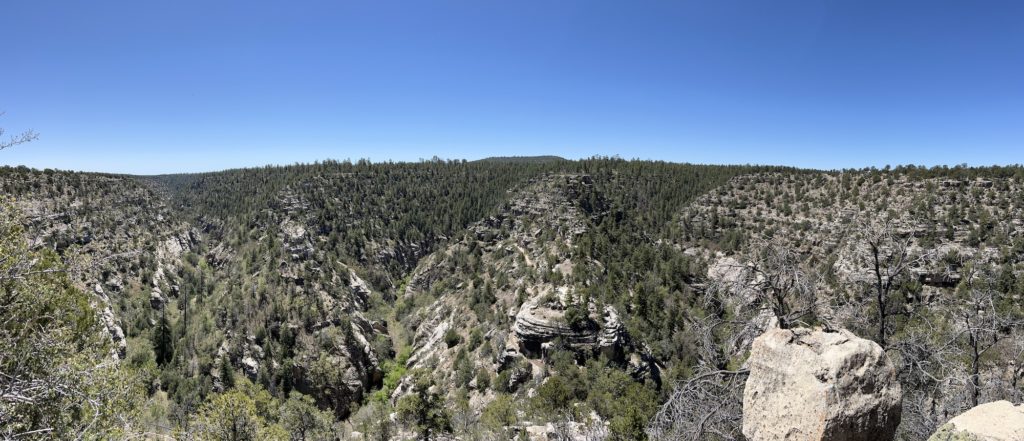
The trail around the central island is about a mile long and there are 25 rooms in the island and many more available to see on the outer walls.
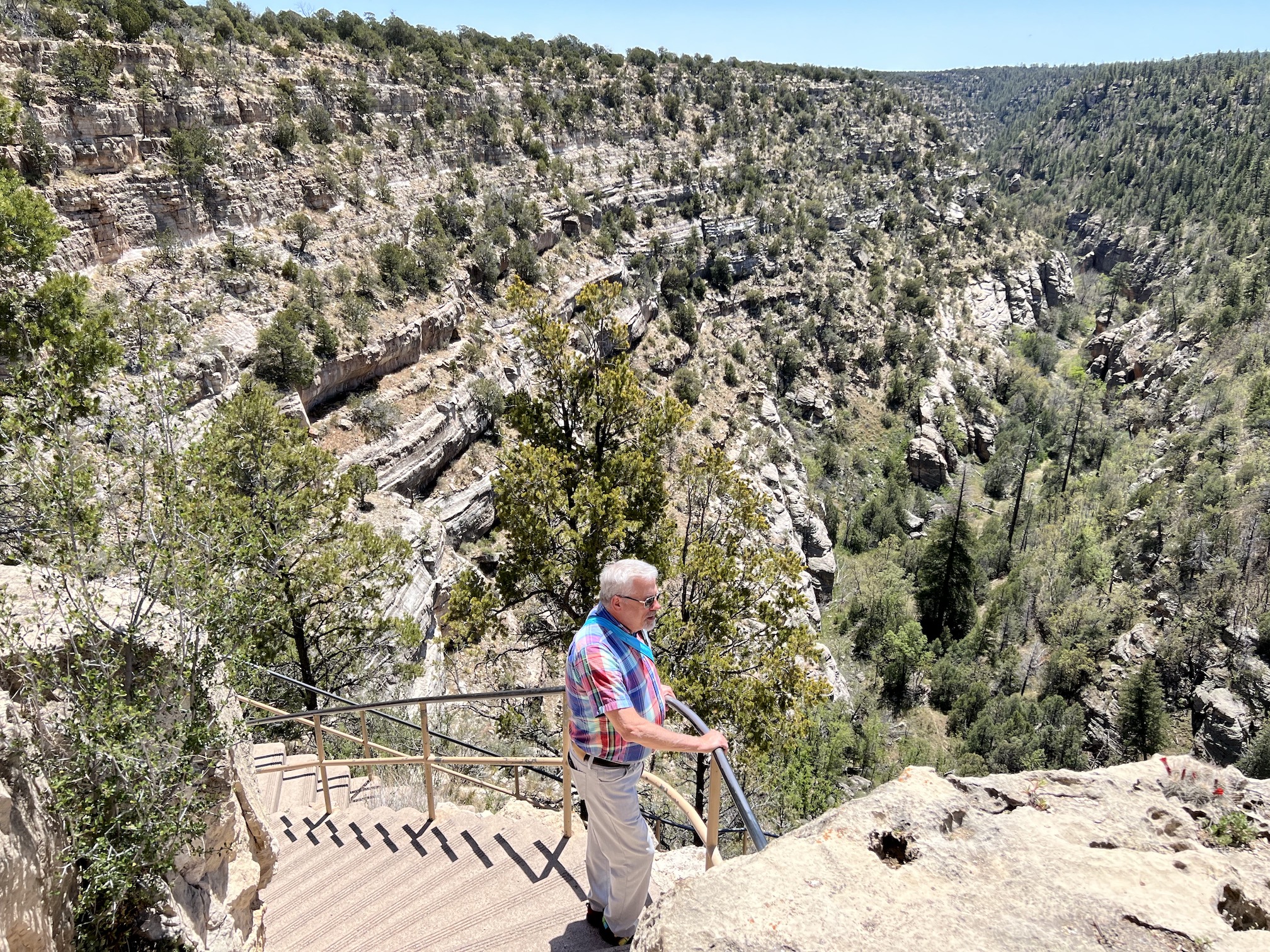
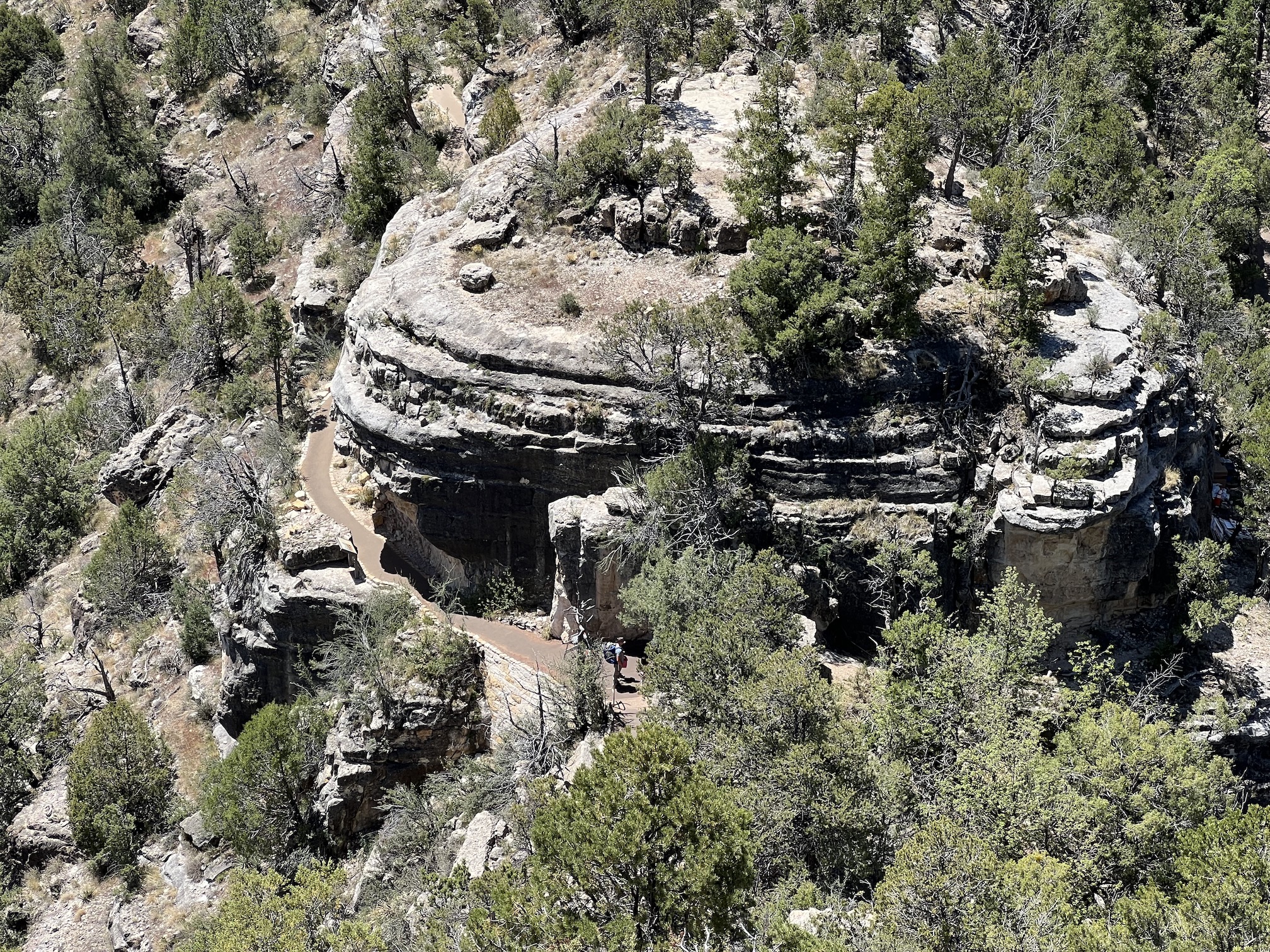
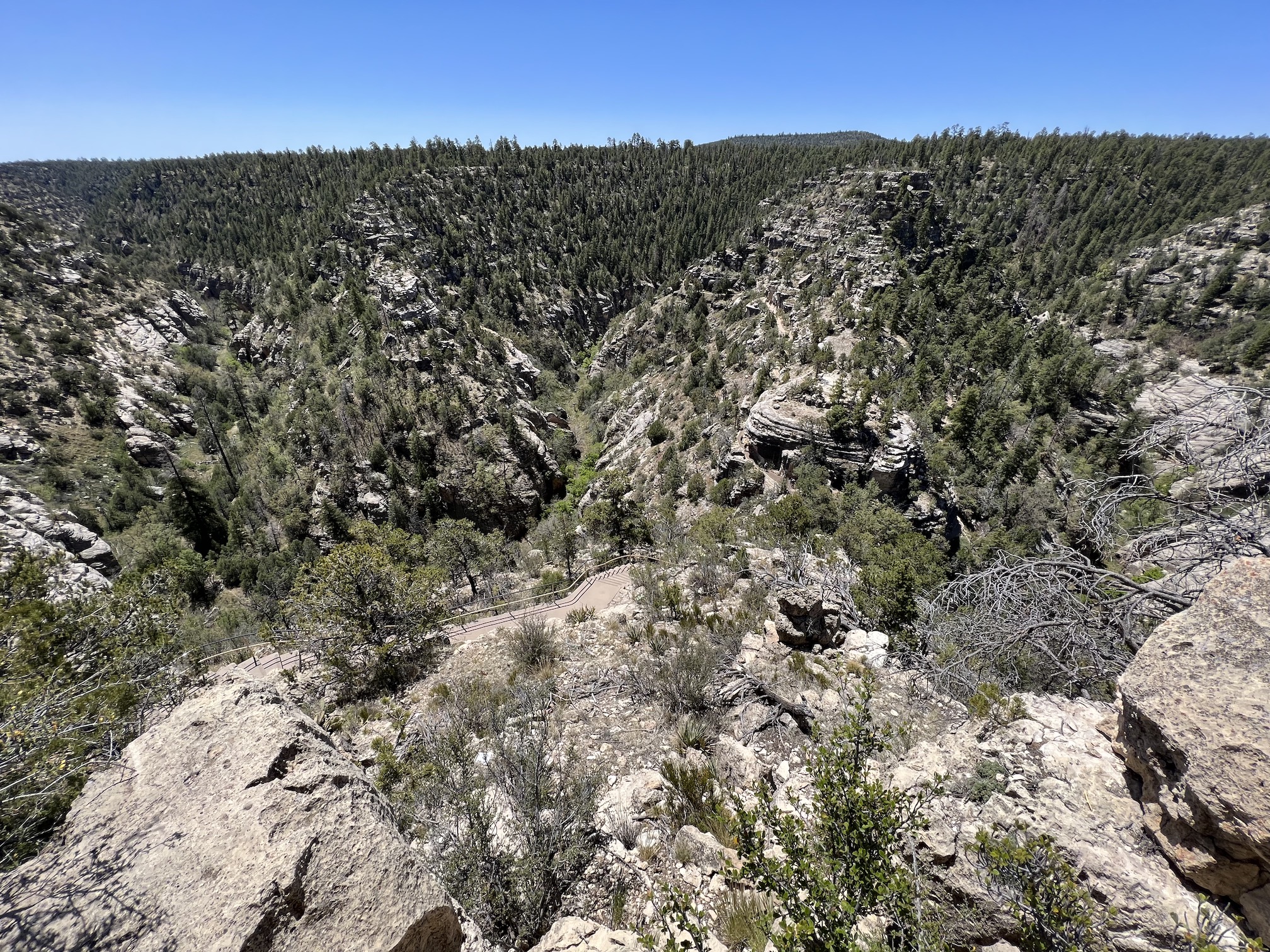
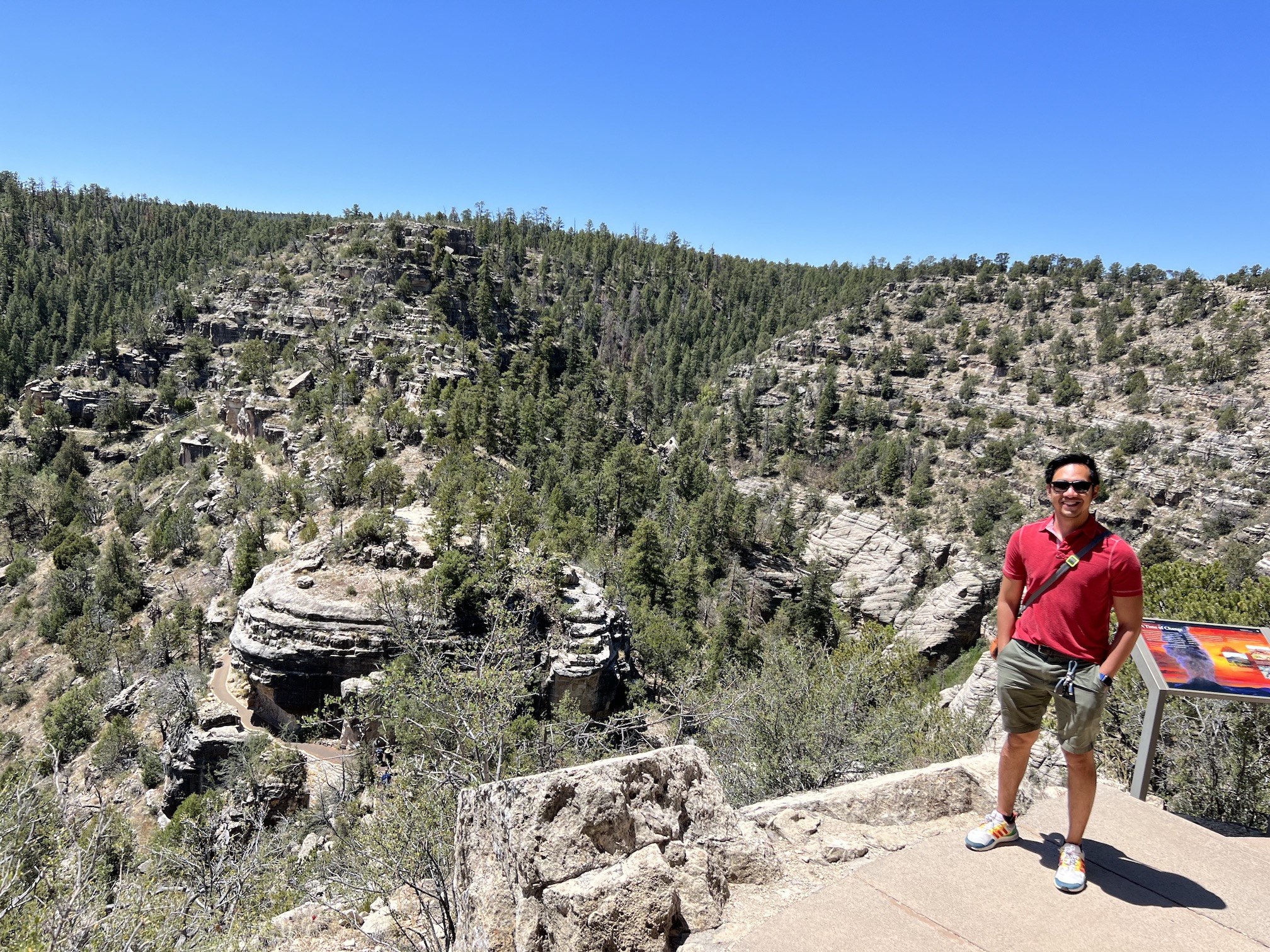
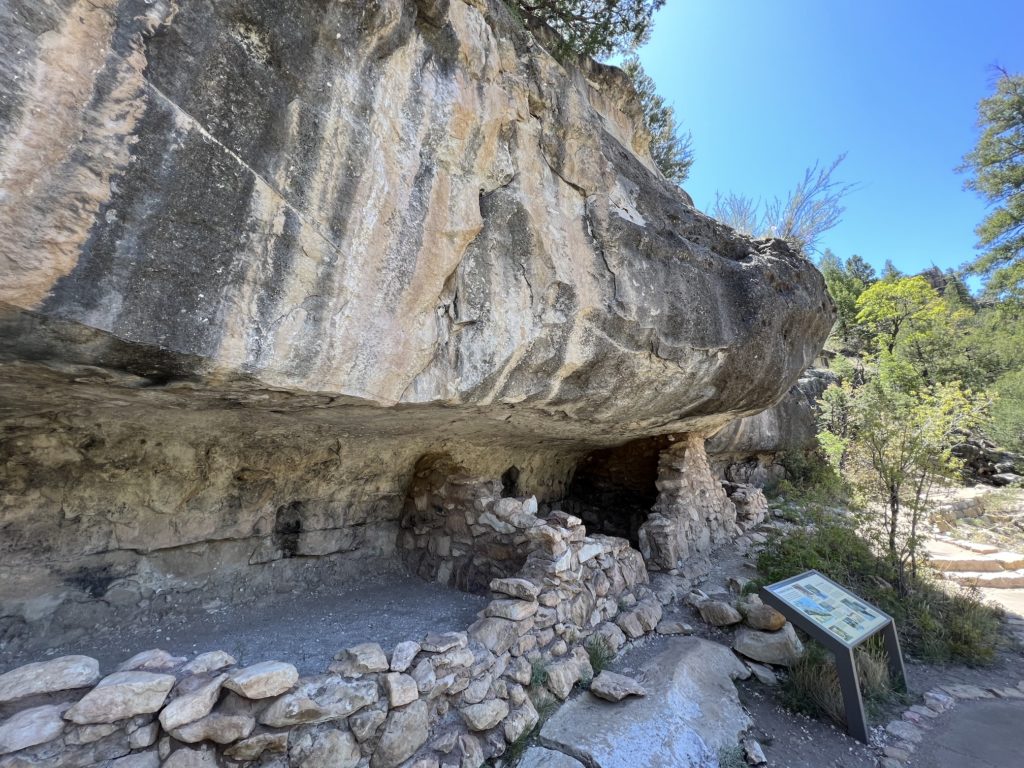
On day eighteen we took in Wupatki National Monument where we visited the Wupatki pueblo and the Wukoki pueblo. The Wupatki pueblo is the largest freestanding pueblo in Arizona and is quite impressive with it’s main structure of many rooms along with a community room and ball court. Below you see a shot of the entire site with the ballcourt on the far right in back and the community room more to the front but also on the right.
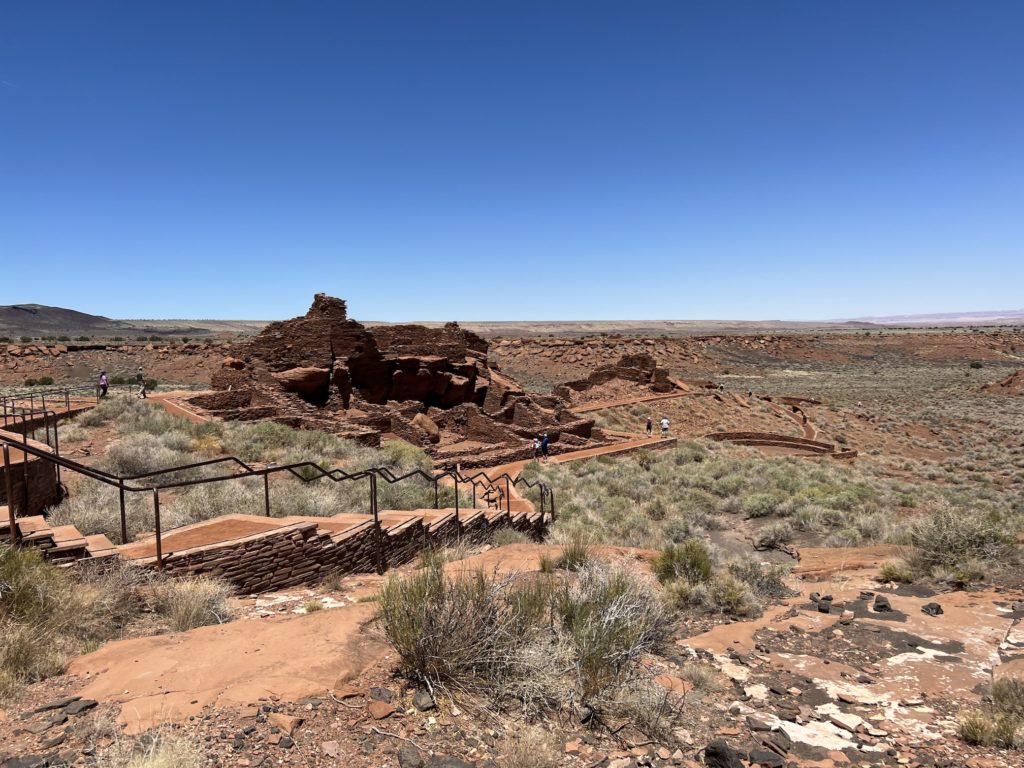
One of the things that continues to fascinate me on these visits is the different materials used to build their respective dwellings. As is probably obvious, each site makes use of whatever natural structure is available along with whatever is the easiest building blocks to attain. From limestone, to caves, to sandstone, to petrified wood. The natural environment is exploited to create living space that is hospitable and defendable. This is also one of the best examples of the ball court I’ve seen on this trip. A feature that seems to indicate more community and possibly even cross community activity.

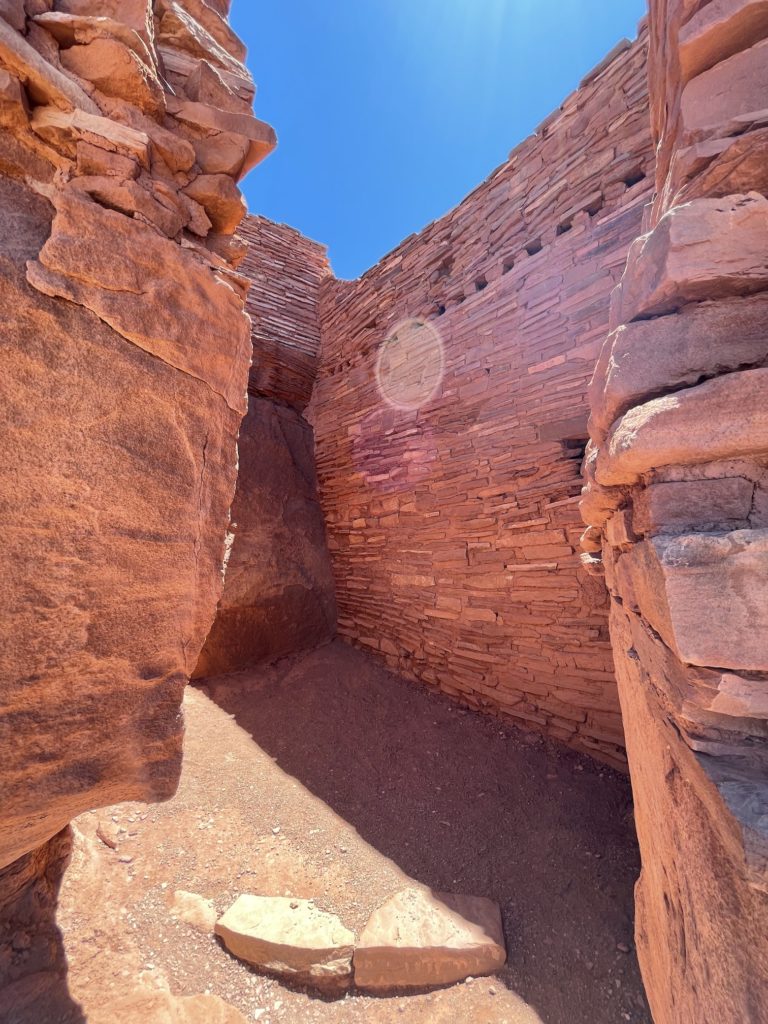
After this site we drove in the same National Monument to one of the other four sites, Wukoki pueblo.

Wukoki is over 900 years old and when it was first discovered by archeologist Jesse Walter Fewkes in 1896 there were many artifacts that were artistically beautiful, useful in everyday life, and decorative. Bracelets and earrings, among other things were found and preserved at this time.
Wukoki was three stories tall with rooms for several families in its original grandeur, and a partial wall surrounded the site. I imagine that daily routine was filled with food gathering and preparation along with pottery and family times at this site. It also seems obvious that safety and protection were high on the list of considerations when the site was chosen since it sits so grandly above the surrounding landscape.
What do you think your primary activity would be if this was your home/fortress?